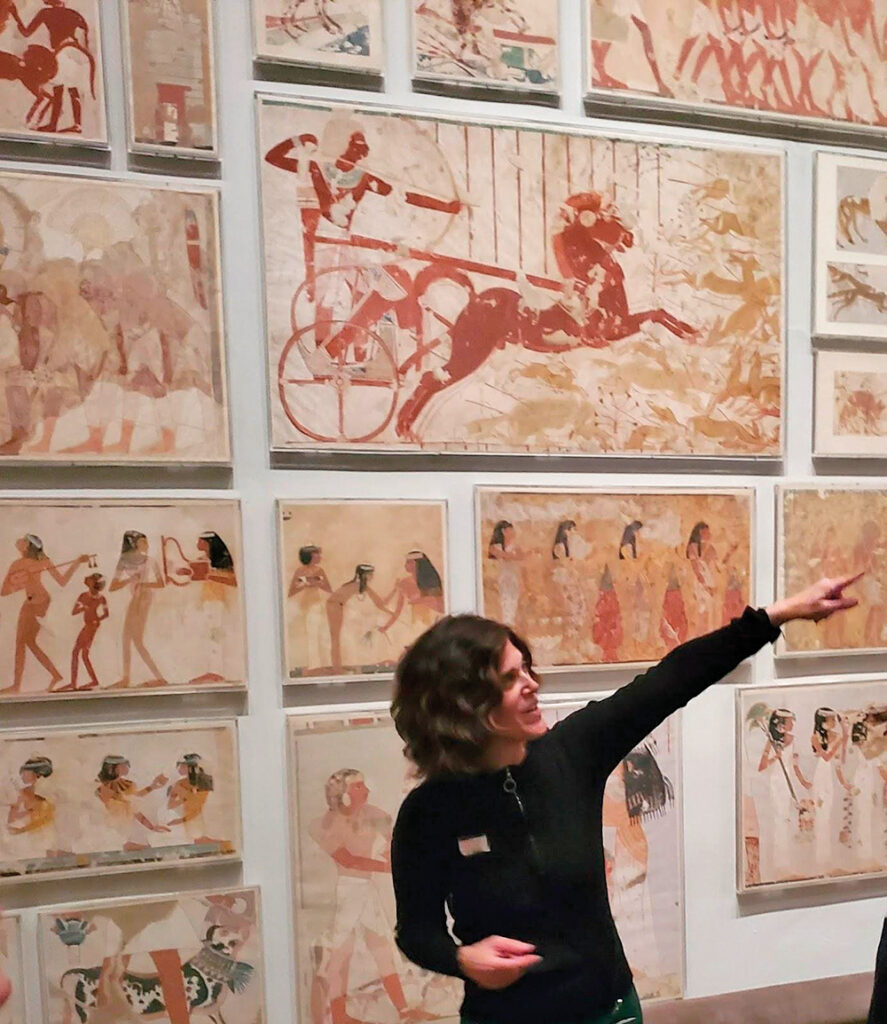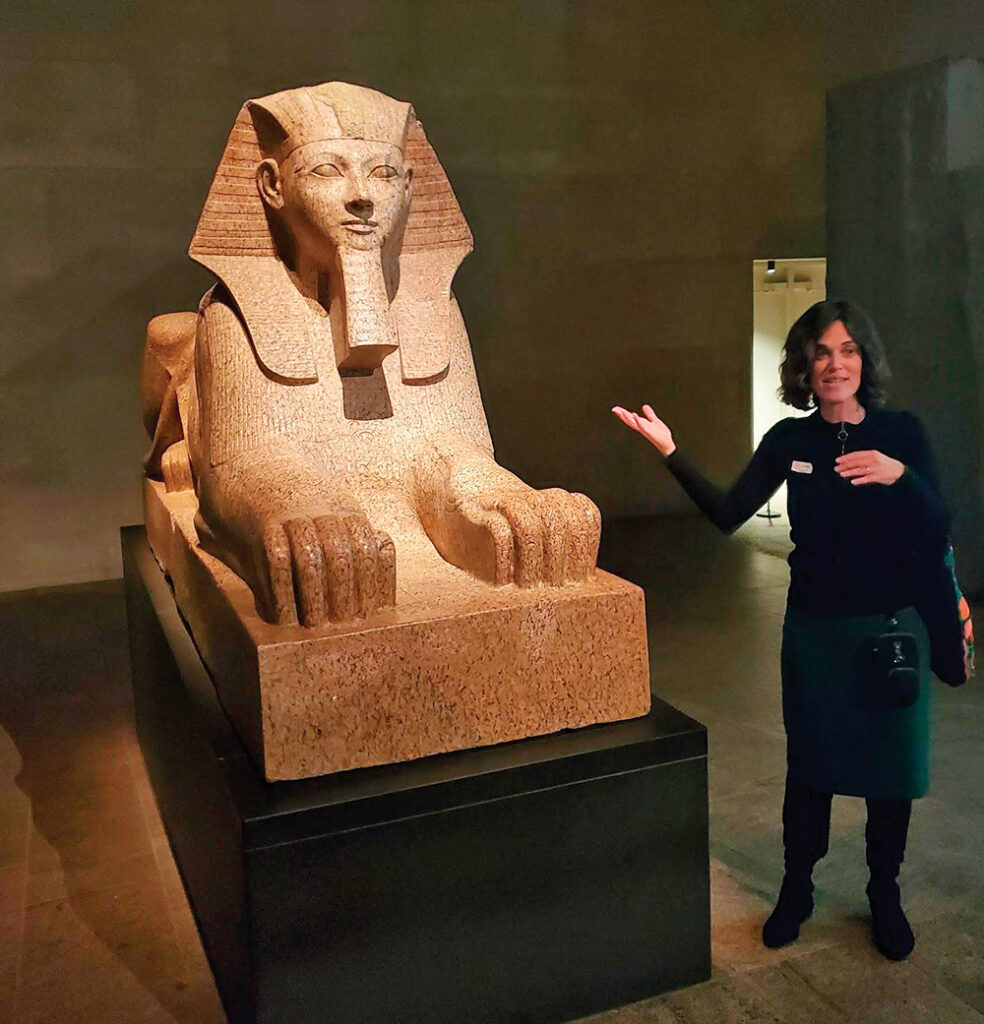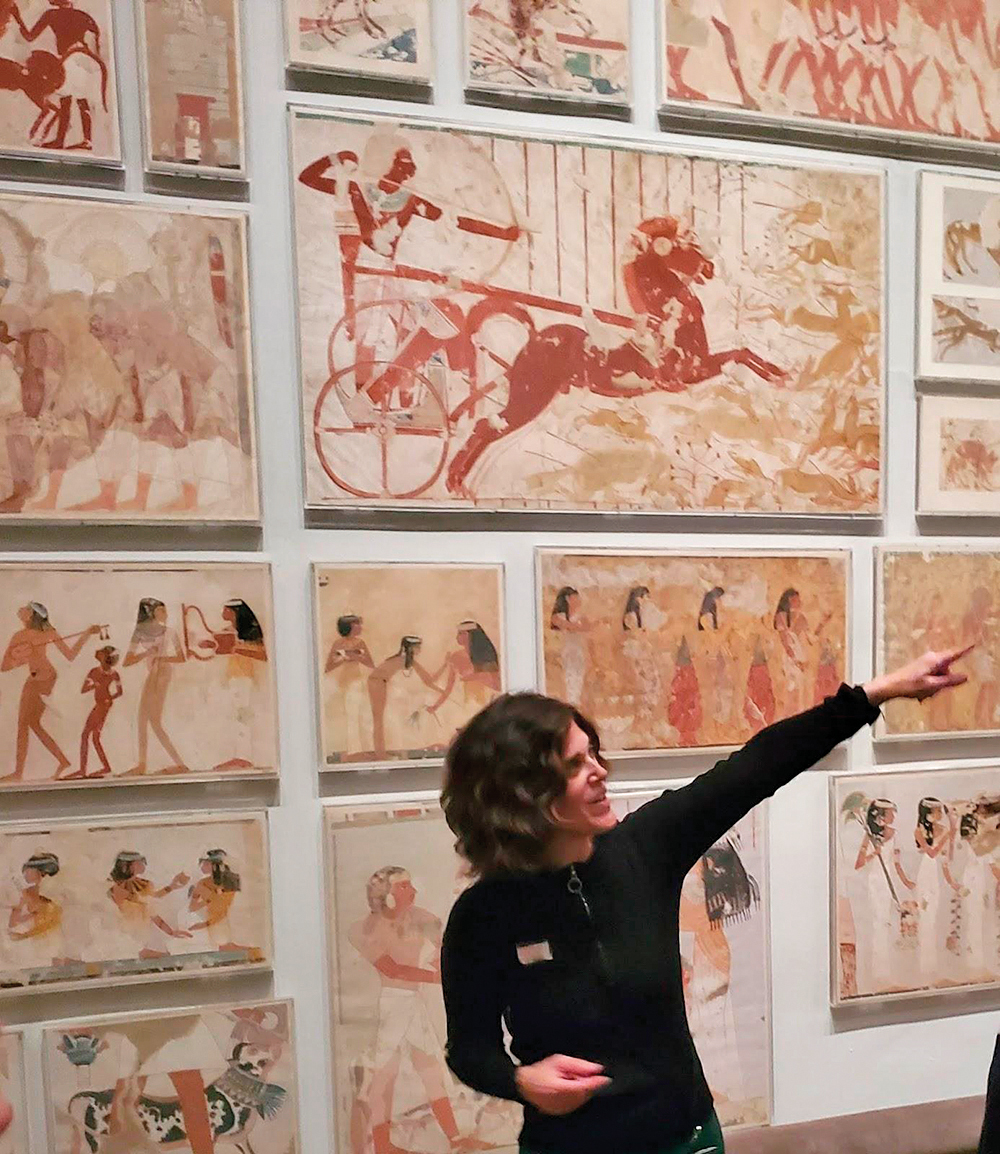
בכל דור ודור חייב אדם לראות את עצמו כאילו הוא יצא ממצרים
In each and every generation, a person is obligated to see himself as if he left Egypt.
One of the most unique and experiential ways to fulfill this obligation is by visiting the Temple of Dendur room at the Metropolitan Museum of Art, an encyclopedic museum where I have been working as an educator and lecturer for over 20 years and where I will be leading pre-Pesach tours over the next two weeks.
The Temple of Dendur, the only ancient Egyptian temple in the United States, is set in a room in the Met that was created to make people feel like they are in ancient Egypt. It is a huge space with fantastic natural light and large windows that look out onto Central Park. The floor to ceiling windows are slanted to resemble the side of a pyramid. The rest of the walls are built from stone similar in look to the sandstone blocks that were used to build the Temple of Dendur. There is a pool of water (the recreated Nile River) with a papyrus plant growing in it and a crocodile sculpture (perhaps a תַנִּין from Tanach) in the water.
There are many imposing ancient sculptures in the room, including three sculptures of Pharaohs. Two of the sculptures depict Pharaohs who are possibly the Pharaohs of the Exodus: Thutmose III (ca. 1458-1425 BCE) and Amenhotep II (ca. 1427-1401 BCE). It is very challenging to determine exactly who the Pharaoh of the Exodus was, as Tanach dates and Egyptian chronology are often at odds (as I outlined in detail in my Dec. 16, 2021 article in The Jewish Link). These larger than life sculptures were created as a way to control the population in ancient Egypt, and they allow us to imagine how scared and powerless the Israelite slaves must have felt. Large sculptures of the Pharaohs (many of which are in the Met and museums all over the world) were one way each Pharoah imposed his power over a huge population, a large percentage of whom were slaves (some say more than 10 %). In modern times, the idea of despotic rulers using large images to control their people can be seen in the large and imposing Stalin and Lenin sculptures in Russia and the enormous posters of Mao Zedong in China–all of them relaying the idea that “Big Brother” is always watching you.
There are other larger than life sculptures in the Temple of Dendur room, including those of two women, Hatshepsut and Sakhmet. Hatshepsut was a self appointed female Pharaoh who ruled from ca. 1479-1458 BCE. She was a very conniving and powerful woman who may have been one of the Pharaohs during the Israelite enslavement (as explained at length in my aforementioned article). Hatshepsut is presented in sphinx form in the Temple of Dendur room while Sakhmet, a goddess, is shown in seated form. The Met currently displays six sculptures of Sakhmet, including four in the Temple of Dendur room, but there were over 600 of these sculptures made between 1390-1352 BCE, a period that the Israelites were possibly in Egypt, according to some Tanach scholars. Sakhmet was known to the ancient Egyptians as the goddess of the plague (among her other “powers”), and her sculptures, with the head of a lioness and the body of a human, elicited great efforts of appeasement during devastating plagues. It is interesting to consider that over 600 sculptures of the goddess of the plague were made around the time of the 10 Plagues (or as mentioned in the Haggadah: the 60 plagues according to Rabbi Yossi Haglili, 240 plagues according to Rabbi Eliezer and 300 plagues according to Rabbi Akiva). The Egyptians would have needed many sculptures to counter that many plagues!

Although these are all amazing artifacts which connect us to יציאת מצרים, the most imposing structure in the Temple of Dendur room and the reason for the room’s construction is the Temple of Dendur itself. The Temple of Dendur was built more than 2,000 years ago (ca. 15 BCE) along the Nile River, by the Roman emperor Augustus during a time when Egypt was ruled by the Roman Empire (the same Roman Empire that destroyed the Beit Hamikdash 85 years later). Although the Temple of Dendur is much “newer” than the other objects in the room, they all come from ancient Egypt.
The Temple of Dendur, an actual ancient Egyptian temple, has a fascinating history: How it was built (each brick weighs at least a ton, with some weighing more than four tons); why it was built, the meaning behind all of the images and hieroglyphics carved into the stones; how it got from Egypt to the Met, and why the Met, the only museum in the United States to own an ancient Egyptian temple, was awarded the Temple of Dendur (and no, it was not looted). The answers to all of these questions and many more will be explored at length during my pre-Pesach tours of the Met. Suffice it to say that by visiting the Temple of Dendur on one of my tours and seeing the huge Temple of Dendur and the towering sculptures of Hatshepsut, Thutmose III, Amenhotep II and Sakhmet, you will experience why the Israelites had to leave Egypt and you will have a new understanding and appreciation of our age old dictum:
בכל דור ודור חייב אדם לראות את עצמו כאילו הוא יצא ממצרים
Elana Kaplan, a museum educator and lecturer, worked at the Met for over 20 years. She now runs Museums Unmasked, an integrated learning and museum tour program for both adult and student groups. Elana received her BA in Jewish History from Barnard College and a double MA from New York University in Jewish History and Museum Studies. She and her family are currently living in Israel where she works at the Israel Museum, as well as running Museums Unmasked. To book a Met tour or virtual tour with Elana, contact her at [email protected]













